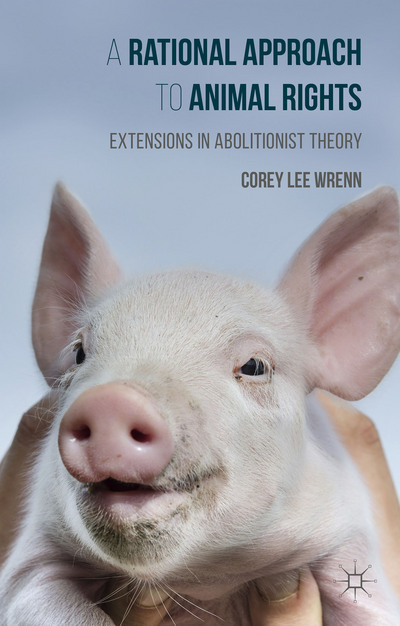The Role of Scientific Claimsmaking in a Rationalized Movementscape
One of the defining features of the 21st-century Nonhuman Animal rights movement is its move to increase rationalization. This is a process that prioritizes efficacy, control, and calculability of operations (Wrenn 2016). It is also especially concerned with fundraising and bureaucratic growth.
The social movement arena is a crowded one, however, and taking this predictable path makes it difficult for organizations to stand out in their effort to attract large grants and donations. One increasingly utilized strategy to get an edge on the competition is to demonstrate the efficacy of that organization’s chosen tactic.
With the lives of so many Nonhuman Animals on the line, investing more resources into learning what tactics are more or less effective is vital. However, social movement organizations often evoke scientific research to support their preexisting strategies and ideologies. Research that demonstrates contrary results may be ignored; research that provides weak results may be overly hyped.
As we know to be true of political debates transpiring in mainstream media, “alternative facts” and “fake news” can easily dominate in the social movement discourse as well. Few activists will be bothered to investigate the truthfulness of the claims being made. Even fewer have the skills necessary to determine the validity or reliability of scientific results. This essay is designed to highlight some issues for activists to consider when determining the usefulness of tactical research.
The Importance of Significance
A widely circulated and celebrated Faunalytics study, “Reduce” Or “Go Veg”? Effects On Meal Choice, exposed diners at a university cafe to two videos. One promoted a flexitarian solution, the other vegetarianism. Afterward, researchers tracked participant meal choices to ascertain if exposure to either film was influential. The findings?
After a reduction advocacy video, 25.8% of participants ordered a meatless meal, versus 18.9% after a vegetarian advocacy video (a marginally significant difference). (p.4)
Significance is key. It is the difference between a measurable correlation between variables (x influencing y) and random occurance (x just happens to actify when y does). The more significant the statistical result, the more confidence we can have in a correlational relationship existing between two variables. In this case, we are interested in the relationship between exposure to a particular message (x) and subsequent meal choice (y).
If the difference between the two messages is “marginally significant,” why not go with the morally consistent one? I believe the findings were misinterpreted in an effort to lend scientific support to outreach behaviors already engaged by nonprofits. These behaviors tend to be individualistic, one-off, and, given their avoidance of animal liberation and vegan language, more appealing to potential funders.
The professionalized movement has a propensity for aggravating vegan stigma, a persistent trend I have uncovered in an extensive content analysis of movement publications. Other researchers have noted blatant underreporting on existing vegan numbers as well.
The Faunalytics study also found that more people reported that they would be willing to reduce their consumption of “meat” than those who indicated they would be willing to eliminate it altogether. But what does this flexitarian claim really mean? The professionalized Nonhuman Animal rights movement has for many years now adopted the “meet people where they are” approach which does little, if anything, to push people past their existing dietary habits. Although vegan and vegetarian consumption is stigmatized behavior, it is also recognized as a social good (a paradox explained by do-gooder derogation). In other words, folks are more likely to report in such a way that puts them in a positive light, even if it is not an accurate representation of their behavior.
What about the actual “marginally significant” behavior change? Having folks immediately order a single meatless meal is not necessarily any better than successfully recruiting fewer vegetarians. Vegetarians and vegans (who, by the way, are more likely to commit when it their consumption is not viewed as a diet but instead becomes part of their identity) will order infinite meatless meals over their lifetime. Theoretically, they will far surpass their flexitarian counterparts in their capacity to reduce harm to other animals.
Spuriousness
It is also important to consider other things that might be influencing behavior (y). Crime rates tend to go up in the summer at the same time ice cream sales rise. Does this mean that ice cream consumption (x) causes crime (y)? No, of course not. There is a spurious relationship between the two which can be pinned on the warm weather which makes ice cream more palatable and crime more enticing (stealing cars, for instance, is less appealing when it is freezing outside). Social science researchers shy away from causation language for this reason (ie. “x causes y“).
There are so many confounding variables in social science research, it can be difficult to assign weight to the results. With regard to the study in question, we might first consider social psychological barriers. Asking people to go vegetarian on the spot is unrealistic; many people need time to process and consider (McDonald 2000). Caught off guard on the way to eat a meal already planned in their head, how many more would change their choice if given more time to contemplate?
For most of us, when we go to a local restaurant for lunch, we are taking time out of the busiest part of our day to visit a place (and a menu) already well known to us. That is, we have made our meal choice before we even arrived. Many folks (myself included) go out to eat with a general idea of what they will be ordering when they arrive to the restaurant. Perhaps you can recall the feeling of arriving a favorite restaurant and your preferred meal choice is sold out, or, you visit a new restaurant for the first time and cannot decide. It can be flustering! Indeed, having to make a choice can sometimes be taxing or anxiety-inducing. This is one reason why people are creatures of habit. It is less cognitively taxing.
Furthermore, a coffee shop is a strange place to conduct a study of this kind, as this is not a typical sort of place one might go for a regular meal. Many of the veg options (such as those offered by the experiment location: eggplant, tofu, etc.) are likely to be unfamiliar to the average pizza, burger, and taco eating university student. Here, the confounding variable might be consumer familiarity with non-flesh foods.
The percieved accusatory approach may also be problematic. Social psychologist Hank Rothgerber finds, for instance, that participants may double down in their commitment to speciesism when they suspect that they are being expected to abstain. These folks brazenly reported that they planned to eat more Nonhuman Animals.
Sociology would further suggest that group dynamics are relevant here. The Faunalytics study focuses on individual patrons, but the presence of others (or lack thereof) influences how individuals process information and behave. The presentation of veganism as something that is trendy and socially normative is also important for recruitment. This study, in utilizing an experimental design, attempts to isolate action and reaction, but the social world is not so simplistic.

The Problem of Generalizability
Another recent study on vegan motivation by Trent Grassian (A New Way of Eating: Creating Meat Reducers, Vegetarians and Vegans) is a bit more realistic in capturing real-world behaviors. It did not demonstrate very positive result for the flexitarian approach. The main finding?
Those with the strictest goals (i.e. vegans) were the most likely to be meeting their reduction goals (78%), while meat reducers were the least likely (39%).
While meat reducers were more likely to reduce than not in the first month, the reverse was true afterward, with 54% being temporary reducers at six months, 36% long-term reducers and 10% no longer consuming meat.
Flexitarians also reported that they planned on eating more animal products (such as fish flesh or birds’ eggs) to compensate.
Grassian’s study surveyed participants in various veg pledges hosted by Nonhuman Animal advocacy and veg organizations. He also employed focus groups to allow participants to share more in-depth explanations.
Triangulation is important in order to account for inevitable shortcomings in various approaches. Interviewees may not be entirely clear when engaging with a researcher for instance, but additional surveys may improve the study’s validity. Triangulating in this way also improves generalizability, that is, how applicable the results from a study’s sample will be to the general population.
A random sample is also important for achieving generalizability, but this was not accomplished with the Grassian study which studied people who had already signed up for a veg pledge. His respondents were disproportionately white, female, and middle-class, a demographic that is consistent with the larger Nonhuman Animal rights movement, but not very representative of the population.
The Faunalytics study was stronger in this regard as it targeted random cafe customers, but this cafe is located on a Canadian university campus. University students are over-represented in vegan motivational research. They are easily accessible to academics for obvious reasons, but also to activist researchers since university campuses are open to the public, have heavy footfall, and are populated with young people who are more willing to respond to requests for interviews and experimental participation for little or no cost. However, the average university student in the West is not representative of the general population. University students are disproportionately white, middle- and upper-class, urban, and well educated.
Because many vegan organizations actively target university students as their primary audience, this may not be a serious issue. If, however, they wish to reach out to underserved demographics (such as older persons, communities of color, lower income communities, and so on), they will want to be wary. What motivates a white middle-class university student is not necessarily what will motivate the average person.
Given these issues, researchers have an ethical obligation to refrain from making sweeping claims about what works based on one precarious study. This research (and their claims) will influence countless organizations, activists, and Nonhuman Animals.
What to Believe?
Science is notoriously politial. Everyone has an agenda, and funding (or lack thereof) can influence the types of questions asked, the findings, and the interpretation of the findings. In the Trump era, the malleability of science is repeatedly bombasted in an effort to confuse the population and erode its trust in social institutions. We should resist the temptation to throw the baby out with the bathwater when it comes to vegan science.
Instead, activists should be mindful and practice critical thinking. Know where the research is coming from, who conducted it, and what motivates them. Certainly, before any research is put into practical action, social movement actors should investigate the research for themselves.
Works Cited
Anderson, J. 2020. “‘Reduce’ or ‘Go Veg’? Effects on Meal Choice.“ Faunalytics.
Grassian, T. 2019. A New Way of Eating: Creating Meat Reducers, Vegetarians
and Vegans. University of Kent.
McDonald, B. 2000. “‘Once You Know Something, You Can’t Not Know It.’ An Empirical Look at Becoming Vegan.” Society & Animals 8 (1): 1-23.
Wrenn, C. 2016. A Rational Approach to Animal Rights. London: Palgrave.
Wrenn, C. 2018. Free-Riders in the Nonprofit Industrial Complex: The Problem of Flexitarianism. Society & Animals 26 (4). Online first. DOI: 10.1163/15685306-12341544.
 Readers can learn more about the social movement politics of Nonhuman Animal rights and veganism in my 2019 publication, Piecemeal Protest: Animal Rights in the Age of Nonprofits. The beautiful cover art for this text was created by vegan artist Lynda Bell and prints are available on her website, artbylyndabell.com.
Readers can learn more about the social movement politics of Nonhuman Animal rights and veganism in my 2019 publication, Piecemeal Protest: Animal Rights in the Age of Nonprofits. The beautiful cover art for this text was created by vegan artist Lynda Bell and prints are available on her website, artbylyndabell.com.

Readers can learn more about the politics of vegan research in my 2016 publication, A Rational Approach to Animal Rights.
Receive research updates straight to your inbox by subscribing to my newsletter.

